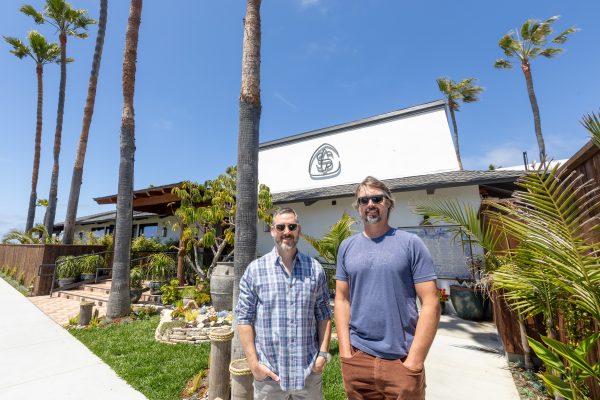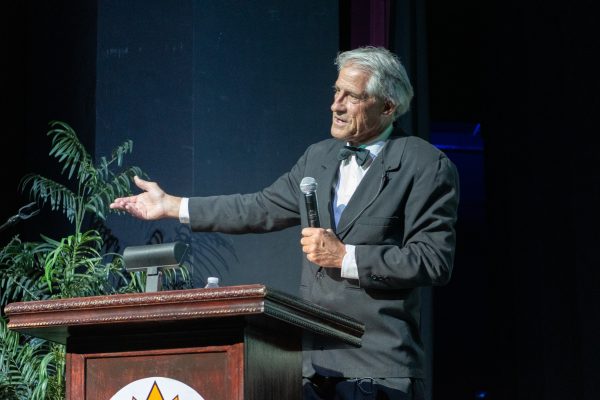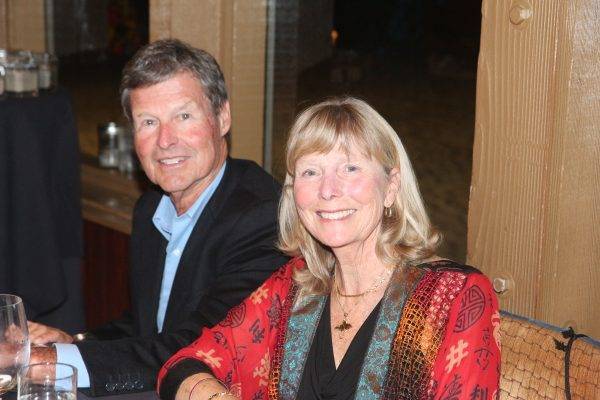
Hermosa Beach will subject a stormwater infiltration project proposed to go under a section of the Greenbelt along the city’s southern border to additional review, including an Environmental Impact Report for the site, amid ongoing opposition from residents living nearby.
The announcement of the EIR, from interim City Manager John Jalili, came at a Tuesday night study session, and will require a vote of the City Council at a regular meeting in the coming months to become official. But the announcement is unlikely to fully satisfy opponents, who packed the Council Chambers in what has become a heated campaign to relocate the environmental effort.
The project would divert water from the Herondo Street storm drain to an underground filtration system under the Greenbelt between Herondo and Second Street. It is meant capture pollutants collected on roadways, treat the collected water and filter it through the soil, limiting the volume that would flow to the ocean from the Herondo outfall.
The infiltration project could help clean up local beaches. Although the Santa Monica Bay has made significant environmental gains in recent decades, water quality tends to plunge following storms, when rains carry harmful material that has built up on Southern California’s miles of impermeable concrete. Pollutants from cars, such as brake dust and oil, can be flushed to the ocean through storm drains, as can various kinds of bacteria.
Attendees at Tuesday’s study session said they supported the project’s clean water goals, but did not want them achieved at the proposed location. Almost all of those who spoke live in the apartment and condominium complexes surrounding the Greenbelt, between Second and Herondo. One speaker asked everyone in the overflow audience who lived south of Fourth Street to raise their hands. When all but a few hands shot up, the speaker asked those who supported the project to keep them raised; every hand came down.
“That’s all you need to know right there,” the man said to the council. “Everyone who lives to the south, where they’ll be affected, nobody wants it.”
The demonstration offered the evening’s most vivid demonstration of the intensity of the opposition to the proposed location. But, like other comments, it did not address the risk that subjecting a project benefitting an entire region to the approval of those most negatively affected could result in the project not being built at all.
Hermosa and other cities in the region are under pressure from the federal Clean Water Act to improve water quality. According to assistant city attorney Lauren Langer, failure to improve water quality readings by 2021 could lead to fines for the city as high as $37,000 per day. Environmental groups, who along with private citizens have the right to sue over non-compliance, have previously stated that are not willing to support an extension of the deadline to comply, Langer said, because it was already extended as a result of the formation of the Beach Cities Enhanced Watershed Management Program.
The program formed in 2013 when Hermosa, Manhattan Beach, Redondo Beach, Torrance and the Los Angeles County Flood Control District jointly developed a plan for municipal and regional projects to improve water quality. Although it is one of many in the program, the Greenbelt Infiltration project has been identified as the “highest priority” project for the watershed group.
This is largely because of its proximity Herondo outfall, just down the road from the proposed location. The drain leading to the outfall runs for miles along 190th Street, and is the largest storm drain in the South Bay. The area surrounding the outfall regularly receives an “F” following rain storms in Heal the Bay’s “beach grades” monitoring project.
According to projections presented Tuesday, the Greenbelt location would be highly efficient at reducing runoff. For example, although it has only half of the acre-feet storage of another watershed group project in Torrance, it would capture roughly twice the volume of stormwater each year.

These projections have not cured the concerns of residents, who for several weeks have complained that the site selection was arbitrary and capricious. Partially in response, Tuesday’s study session featured a presentation from Kathleen McGowan, a consultant who has been helping the city since the formation of the watershed group. McGowan laid out a dry, rule-driven process by which potential sites all over the watershed were evaluated according to criteria that assigned a score to parcels based on factors like size, distance from the storm drain and whether it was already publicly owned. This process led to the selection of the Greenbelt, McGowan said.
But McGowan’s presentation was arguably the most technical and hardest to follow of the six that preceded public comment, and speakers continued to express concern that the selection was the result of secret negotiations. And, although staff has maintained that the city has followed all noticing requirements associated with the project, council members began questioning whether outreach had been adequate.
“If we blundered something here, it might be the close engagement with our community members who are most affected,” said City Councilmember Mary Campbell.
Last month, Campbell and Councilmember Justin Massey led a community meeting about the project. Confronted with questions, Massey recommended residents read the enhanced watershed management plan. The plan is a 237-page document full of tables, technical jargon and more than 100 referenced acronyms. At Tuesday’s meeting, residents cited the complexity of the regulations governing the project as a reason to slow down.
“This is very hard for anyone to understand: MBA, engineer, whatever,” said resident Heidi Fernandez.
Residents have proposed several alternatives to the Greenbelt location. Some of these face practical problems, including the need for larger pump systems to move the water farther away from the storm drain. An alternative proposal to locate an infiltration project under Herondo would require dredging to a storm drain that is more than 50 feet below the surface in places. Jason Fussell, a civil engineer with the consulting firm Tetra Tech, described this as “not optimal.”
These alternatives could also have the effect of merely displacing the impacts and associated opposition. One alternative, for example, would keep the project under the Greenbelt but move it to the north, where a narrower area would stretch the filtration gallery from Second Street to past Sixth Street. Another would put the project beneath the field at South Park.
It is unclear how affected residents would respond to these alternatives. Comment on the project so far has been dominated by those in the area surrounding the proposed site, in part because public notice requirements are guided by proximity to the project. This is likely to change. Because the preparation of an EIR requires the consideration of project alternatives, those living nearby the alternative designs will now start receiving notices.
Still another alternative floated is locating the project just over Herondo on land in Redondo Beach now owned by AES. As McGowan explained, this parcel was considered but received a lower score in part because it is privately owned. Kristy Morris, an environmental analyst for Hermosa, said that the difficulty in acquiring the site was the main reason why it is not part of the current plan.
“It’s not that it’s completely unrealistic. But as [assistant City Attorney] Lauren [Langer] mentioned, it needs to be done by 2021. And that process is kind of out of the hands of the watershed group,” Morris said.











